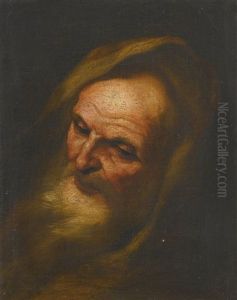Giacomo Farelli Paintings
Giacomo Farelli was an Italian painter of the Baroque period, born in 1629 in Naples, Italy, a city that during the 17th century was a vibrant center for the arts, nurtured by the patronage of the Spanish viceroys. Farelli's work is less widely known today compared to other luminaries of his time, yet his contributions to Italian Baroque painting, particularly in Naples, were significant. His artistic journey reflects the rich cultural and artistic milieu of Naples, which was a melting pot of influences, including those from the Caravaggisti, the vibrant local tradition, and the influx of artists from across Europe.
Farelli's artistic career was primarily concentrated in Naples, where he developed a style characterized by dynamic compositions, dramatic use of light and shadow, and a keen attention to detail. These elements were typical of the Baroque period, which sought to evoke emotion and convey spiritual messages through art. Farelli was adept at both religious and secular subjects, contributing to the decoration of several Neapolitan churches as well as producing portraits and mythological scenes. His works are noted for their vivid realism and emotional depth, qualities that align him with the naturalistic branch of Baroque painting.
Despite his skills and contributions, Farelli did not achieve the same level of fame as his contemporaries, such as Luca Giordano or Artemisia Gentileschi. This relative obscurity can be attributed to various factors, including the sheer number of talented artists working in Naples at the time, which made the art scene incredibly competitive. Additionally, the lack of extensive documentation or surviving works has made it challenging for art historians to fully assess and appreciate Farelli's oeuvre.
Farelli's death in 1706 marked the end of a career that, while not as celebrated as some of his peers, significantly contributed to the richness of the Neapolitan Baroque. Despite the scarcity of his surviving works, those that remain offer a window into the vibrant art scene of 17th-century Naples and the talent that flourished there. Farelli's legacy, though modest in comparison to other giants of the Baroque, underscores the depth and diversity of talent in this golden age of Italian art.














